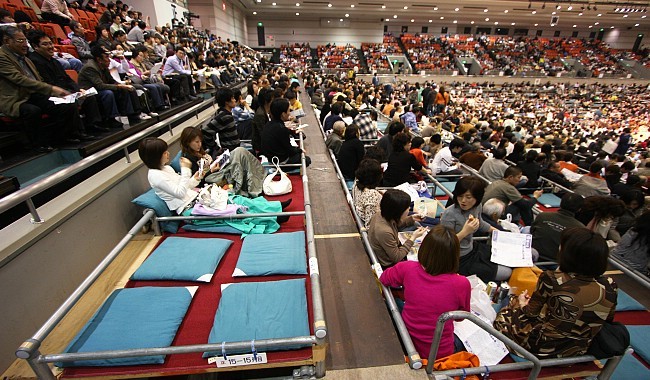Actvities to do in Japan
Activities
sumo wrestling

Sumo is a Japanese style of wrestling and Japan's national sport. It originated in ancient times as a performance to entertain the Shinto deities. Many rituals with religious background, such as the symbolic purification of the ring with salt, are still followed today. In line with tradition, only men practice the sport professionally in Japan.
The rules are simple: the wrestler who first exits the ring or touches the ground with any part of his body besides the soles of his feet loses. Matches take place on an elevated ring (dohyo), which is made of clay and covered in a layer of sand. A contest usually lasts only a few seconds, but in rare cases can take a minute or more. There are no weight restrictions or classes in sumo, meaning that wrestlers can easily find themselves matched off against someone many times their size. As a result, weight gain is an essential part of sumo training.
Transportation
Taxi
Taxis are convenient and can be found even in very small cities and on tiny islands; the train station is the best place to look. Fares are fairly uniform throughout the country. Flagfall (posted on the taxi windows) is ¥600 to ¥710 for the first 2km, after which it's around ¥100 for each 350m (approximately). There's also a time charge if the speed drops below 10km/h. A red light in the lower right corner of the windshield indicates if a taxi is available (it says 'vacant' in Japanese) – this can be difficult to spot during the day. At night, taxis usually have the light on their roof on when they're vacant and off when they're occupied, but there are regional variations.
Don't open the door to get into a taxi; the driver does that with a remote release. The driver will also shut the door when you leave the taxi.
Communication can be a problem with taxi drivers, but perhaps not as much as you fear. If you can't tell the driver where you want to go, it's useful to have the name written down in Japanese. At hotel front desks there will usually be business cards complete with name and location, which can be used for just this purpose.
Tipping is not necessary. A 20% surcharge is added after 11pm or for taxis summoned by radio. There may also be an added charge if you arrange the taxi by phone or reserve the taxi. Finally, taxis can usually take up to four adult passengers (one person can sit in the front). Drivers are sometimes willing to bend the rules for small children.
Train & Subway
Several cities, especially Osaka and Tokyo, have mass-transit rail systems comprising a loop line around the city centre and radial lines into the central stations and the subway system. Subway systems operate in Fukuoka, Kōbe, Kyoto, Nagoya, Osaka, Sapporo, Tokyo and Yokohama. They are usually the fastest and most convenient way to get around the city.
For subways and local trains, you'll most likely have to buy your ticket from a machine. They're pretty easy to understand even if you can't read kanji as there is a diagram explaining the routes; from this you can find out what your fare should be. If you can't work the fare out, a solution is to buy a ticket for the lowest fare. When you finish your trip, go to the fare-adjustment machine (seisan-ki) or the staffed counter before you reach the exit gate and pay the difference. JR train stations and most subway stations have posted above the platform not only their names in kanji and romaji but also the names of the preceding and following stations.
Climate
The weather in Japan is generally temperate, with four distinct seasons: Winter, from December to February, is quite dry and sunny along the Pacific coast and the temperatures rarely drop below 32°F. The temperatures drop as you move north, with the Central and Northern regions experiencing snowfall.